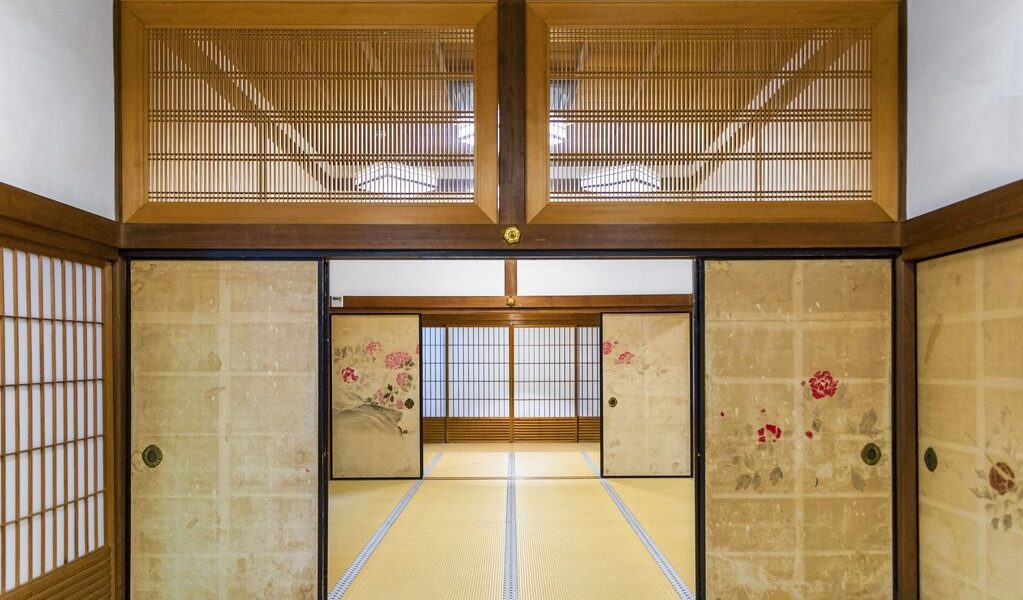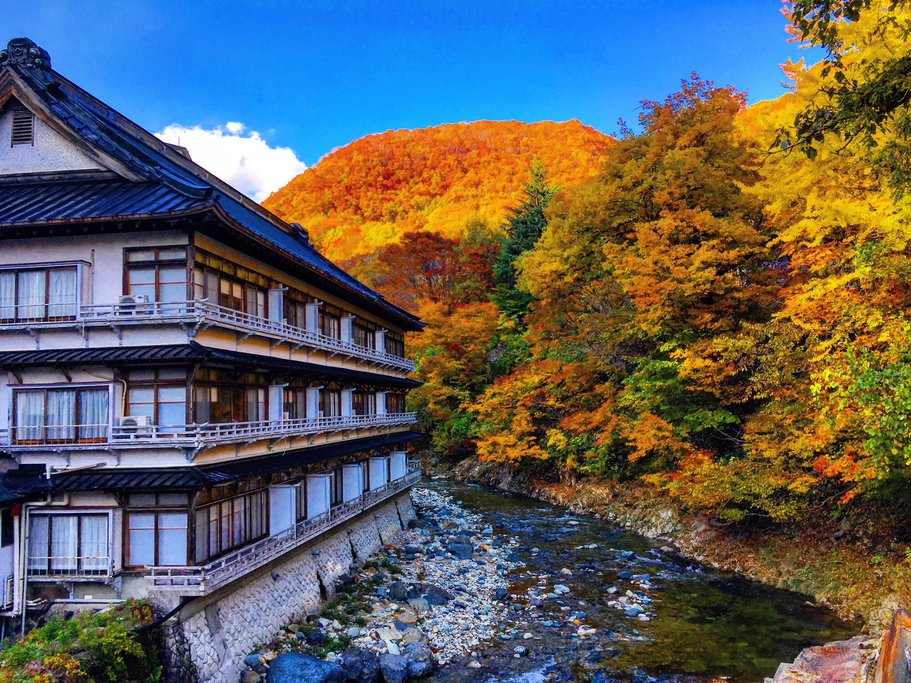
Revitalizing hot spring baths, multi-course dinners made from fresh, local ingredients and the comfiest pillows you’ve ever tried, Ryokan hotels are an unforgettable way to experience traditional, Japanese luxury. Read on to learn the history and offerings of this unique lodging experience and the best places to stay.
What Are Ryokan? An Extended Exploration
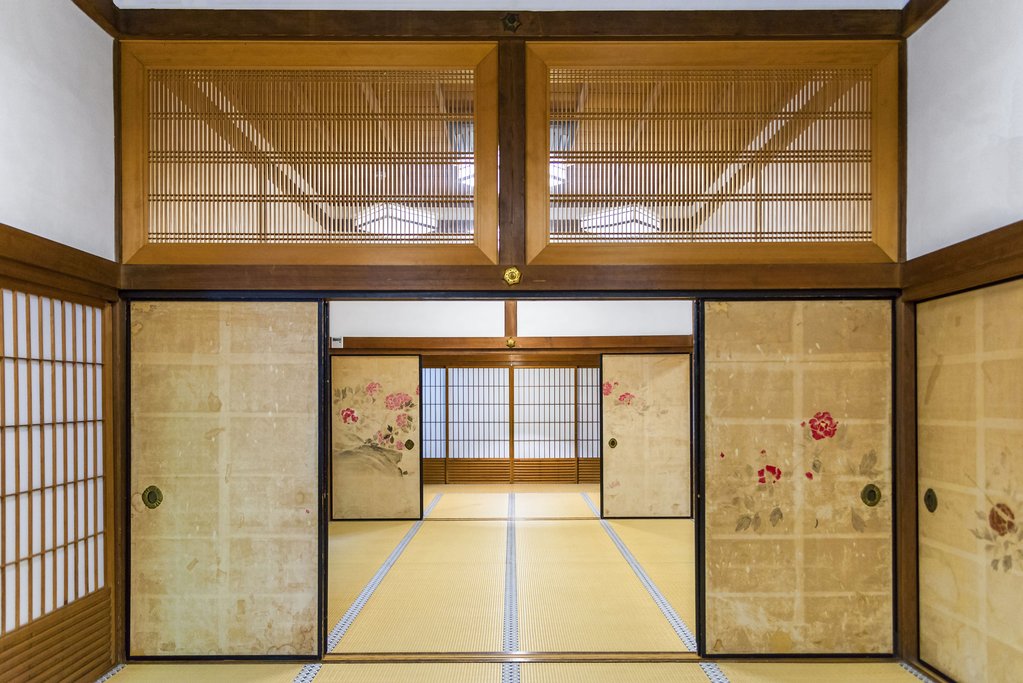
The word Ryokan (pronounced ree-yoh-KAHN) conjures images of serene landscapes and unparalleled hospitality. These are Japan’s ancient-style inns, steeped in history and tradition. Imagine stepping back in time, immersing yourself in a world of meticulous detail and calming rituals. The very first ryokan, and remarkably, the world’s oldest hotel, Nishiyama Onsen Kieunkan, opened its doors way back in the distant year of 710 CE. That’s right, the eighth century! Today, after an astounding 52 generations of continuous operation, hundreds of ryokan exist throughout the diverse landscape of Japan. They present a fascinating spectrum of variety, differing in size from intimate family-run establishments to grand, sprawling resorts, and boasting unique designs ranging from rustic simplicity to opulent extravagance. Costs also vary considerably, catering to a wide range of budgets. However, regardless of which location you ultimately select for your stay, you can expect to find many of the same fundamental trappings and signature experiences that define the quintessential ryokan experience amongst them. These commonalities ensure a baseline level of quality and cultural immersion, regardless of your specific choice.
Traditionally, ryokan floors are comprised of meticulously crafted mats called tatami, which feature a woven, straw textile artfully wrapped around a springy, rice-filled core. These mats provide a comfortable and aesthetically pleasing surface, essential to the overall ambiance. Due to its delicate nature, with each strand of straw carefully positioned, patrons are respectfully asked to remove their shoes upon entering the hotel. This simple act signifies a transition from the outside world to the tranquil sanctuary within. Once inside, you’ll be graciously offered a cotton, kimono-style robe called a yukata. This lightweight garment promotes relaxation and a sense of ease. Although sporting this cozy attire is not strictly required, the vast majority of guests enthusiastically opt to wear it around the hotel, embracing the cultural immersion. And, in the colder months, stay warm and snug by layering up with plush jackets provided, known as a hanten. These warm outer layers add another layer of comfort and practicality to the ryokan experience.
To create a flexible and adaptable experience, ryokan rooms are ingeniously subdivided by sliding, rice paper screens called shoji. These translucent panels allow for the manipulation of light and space, creating a dynamic and customizable environment. The rooms may be furnished as bedrooms or living spaces depending on the specific time of day or personal preference of the guest. This clever design allows for a seamless transition between different activities and moods, enhancing the overall comfort and functionality of the room.
Once settled into your room, take the opportunity to spend the rest of your day leisurely lounging in your private space, perhaps sipping on some green tea and enjoying the peaceful atmosphere. Consider taking a relaxing stroll in your yukata through the beautifully manicured Zen gardens, carefully designed to promote contemplation and tranquility. And, of course, be sure to experience the bliss of soaking in the mineral-rich hot springs called onsen, known for their therapeutic properties and rejuvenating effects. All of this occurs before making your way to a carefully prepared kaiseki dinner, a multi-course feast of classic, Japanese haute-cuisine. This elaborate meal is a culinary highlight of the ryokan experience. And, when it’s finally time for bed, return to your thoughtfully prepared room where a deceptively comfortable futon, a classic buckwheat pillow, and a restful night’s sleep await. The simplicity and elegance of the bedding contribute to the overall sense of relaxation and well-being.
If you’re interested in visiting a ryokan during your trip to Japan, perhaps as part of a broader exploration of the country, consider this 14-day highlights tour, which thoughtfully includes a traditional ryokan inn stay on the sacred island of Miyajima. Imagine waking up to the sounds of the sea and the sight of the iconic torii gate. Or, for a more active adventure, try this 10-day self-guided walking tour of the famous Nakasendo Trail, during which you’ll stay in carefully selected ryokan along the route. This immersive experience will allow you to connect with nature and experience the authentic culture of rural Japan.
Chat with a local specialist who can help organize your trip.
Delving Deeper: Elements of a Ryokan Experience
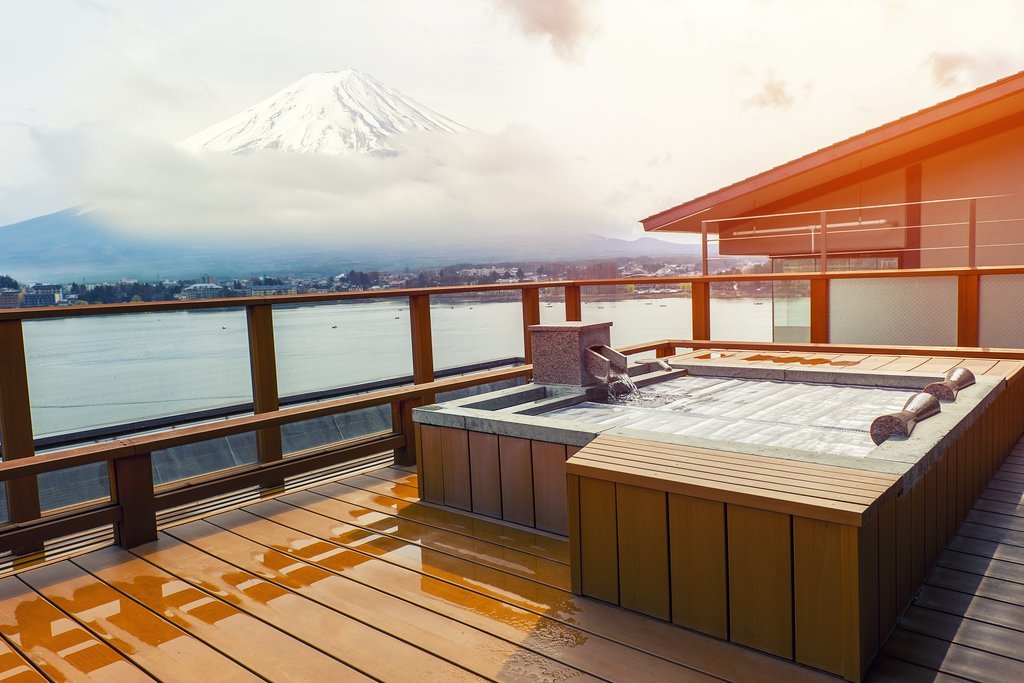
Onsen: A Geothermal Paradise
Onsen (pronounced OHN-sehn) represent a fundamental aspect of Japanese culture and a quintessential element of the ryokan experience. These rejuvenating hot springs use water sourced directly from geothermically-heated springs deep beneath the earth’s surface. This unique feature makes visiting a ryokan that offers one akin to staying at a live-in spa, providing unparalleled opportunities for relaxation and wellness. Often, a single inn will offer a diverse array of multiple onsen experiences, catering to a variety of preferences. These can range from expansive, meticulously designed indoor baths of pumice and hand-carved cedar, creating a soothing and aromatic environment, to steaming, outdoor pools that gaze upon meticulously landscaped courtyards and breathtaking mountain vistas. The sheer variety of onsen options ensures there’s something for everyone. And, depending on the specific region and geological conditions, some onsen boast water remarkably rich in rejuvenating minerals like sulfur, iron, sodium, and hydrogen. These minerals are believed to have therapeutic benefits, promoting skin health and overall well-being.
In ancient times, reflecting a more communal approach to bathing, men and women enjoyed onsen together. However, today, aside from a handful of areas in rural Japan that retain this tradition, most baths separate visitors by gender, promoting a sense of privacy and comfort. As a result, ryokan typically offer two distinct and separate onsen areas, each assigned to either men or women. To ensure fairness and variety, these assignments often swap throughout the day, allowing guests to experience both facilities. This rotating schedule adds another layer of interest to the onsen experience.
Upon entering one of these designated areas, patrons will quickly find a well-organized system of cubbies, thoughtfully provided for the convenient storage of their yukata, room key, and other small personal items. This helps maintain order and cleanliness within the changing area. Guests are expected to follow an easy-to-learn set of rules, thoughtfully written to ensure both cleanliness and relaxation for all users. These guidelines are typically displayed in a clear and concise manner. Washing and rinsing thoroughly before entering the hot water are universally required, a crucial step in maintaining the purity of the onsen water. To facilitate this process, bathing stations, complete with shampoo and soap, are generously provided. For sanitary reasons and to preserve the integrity of the onsen experience, swimsuits are strictly prohibited, as are wearing the provided towels while submerging in the pools. This allows for maximum absorption of the beneficial minerals and ensures a consistent experience for all guests.
It’s important to note that some onsen politely decline service to visitors with visible tattoos. Originally, this policy developed to ward off potential members of Japanese organized crime gangs, whose membership is often associated with full-bodied tattoos. However, as western tourism to Japan has significantly increased in recent years, more and more establishments have begun welcoming tattooed guests, provided their ink is discreetly covered with a temporary waterproof patch or sleeve. This reflects a gradual shift in attitudes and a greater understanding of cultural differences. If you have a tattoo, it’s always a good idea to call your chosen ryokan ahead of time to inquire directly about their specific policy on tattoos, ensuring a smooth and enjoyable experience.
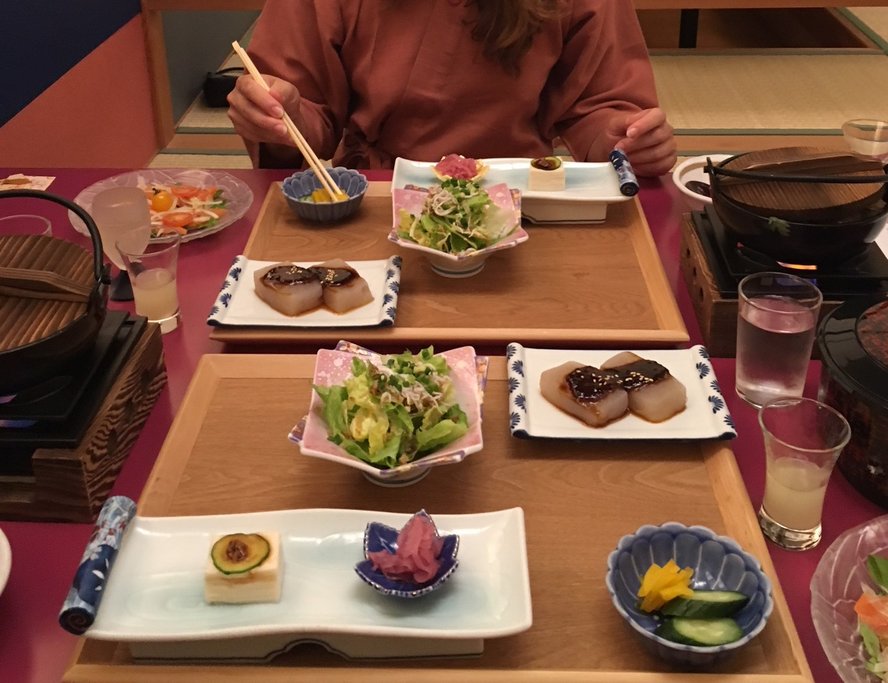
Kaiseki Dinner: A Culinary Journey
A chief and compelling reason to stay at a ryokan is undoubtedly to try kaiseki, a playfully imaginative, multi-course dining experience that boasts deep historical roots going all the way back to 9th century Japan. This ancient culinary tradition has evolved over centuries into a highly refined art form. Sometimes referred to as “Japanese haute-cuisine,” these meticulously crafted set menus follow a regimented order, often consisting of fourteen or more distinct dishes. Together, these courses comprise the blank canvas for individual chefs to showcase the freshest seasonal ingredients, prepared with their own personal flair and artistic expression. Each chef brings their unique vision and expertise to the kaiseki experience.
When booking your ryokan stay, you’ll invariably be given the option to add kaiseki to your reservation. While this will add to the overall cost of your bill, it’s important to remember that you will generally save considerably when compared to the often exorbitant menu prices of kaiseki restaurants located outside of your hotel. This makes dining at the ryokan a more economical and convenient choice. Upon check-in at the ryokan, you’ll be asked for your preferred dining time, allowing for a personalized and flexible experience. Typically, two options are presented, one earlier in the evening and one later, catering to different preferences and schedules.
When it’s time for your meticulously planned meal, make your way to the artfully designed dining area, a space often adorned with traditional Japanese aesthetics. There, you’ll be greeted by the welcoming, kimono-draped staff, ready to whisk you off on a multi-hour culinary adventure, filled with surprises and delights. In Japan, kaiseki is not merely considered food; it is regarded as a true art form, a carefully orchestrated performance for the palate. As such, the dishes presented are carefully crafted to achieve the perfect balance of taste, color, texture, and overall aesthetic appeal. Every element of the dish is thoughtfully considered and arranged. Menus often revolve around a seasonal theme, showcasing the freshest local ingredients that are at their peak flavor. This means that kaiseki is also an excellent and immersive way to learn about the unique culinary culture and distinctive products of your ryokan’s immediate area and surrounding region.
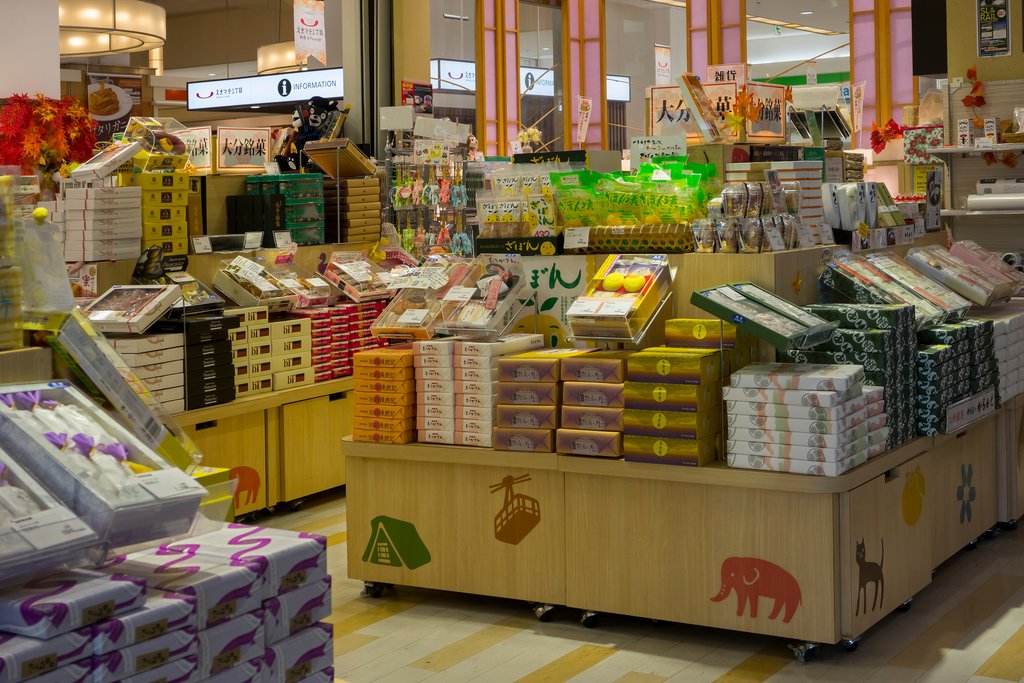
Omiyage Shops: Treasures to Take Home
Another fantastic place to learn about and buy locally-made items and regional specialties are the charming small stalls located in the lobby of your chosen ryokan. These shops are sometimes affectionately called “omiyage shops.” The name refers to the deeply ingrained Japanese tradition of omiyage (oh-mee-AH-ghee), a word used both for the Japanese custom of never arriving at an important meeting of friends, family, or even co-workers empty-handed and also to specifically describe the types of gifts themselves, typically ornate and beautifully presented boxes of individually wrapped sweets or cookies. These gifts are a token of appreciation and a symbol of connection.
Versions of these delightful shops can be found throughout Japan in a variety of locations, from bustling airports and busy train stations to upscale department stores. However, the ones found within ryokans differ in several unique and significant ways. First and foremost, they feature locally-produced goods and commodities, providing a direct connection to the surrounding area. Imagine browsing through regional sake samplers, offering a taste of the local breweries, or indulging in delectable cookies baked with fragrant matcha grown in the rolling hills nearby. And also, they often showcase the remarkable works of local artisans, making them the perfect place to find a truly unique, regional memento to remember your stay by. These handcrafted items are often one-of-a-kind and reflect the cultural heritage of the area.
Many ryokan even sell unworn yukata in their shops, offering a chance to purchase this comfortable garment at prices far more affordable than those found in the specialized kimono boutiques of big, metropolitan cities like Kyoto or bustling Tokyo. And, if this is of particular interest to you, but you don’t readily see one on display in the shop, many of the friendly owners will happily offer to sell you the very one you are currently wearing, or even provide extras directly from their linen closet should you desire to bring some home with you as thoughtful gifts for friends and family. This personalized service adds another layer of warmth and hospitality to the ryokan experience.
Where To Stay: Ryokan Recommendations
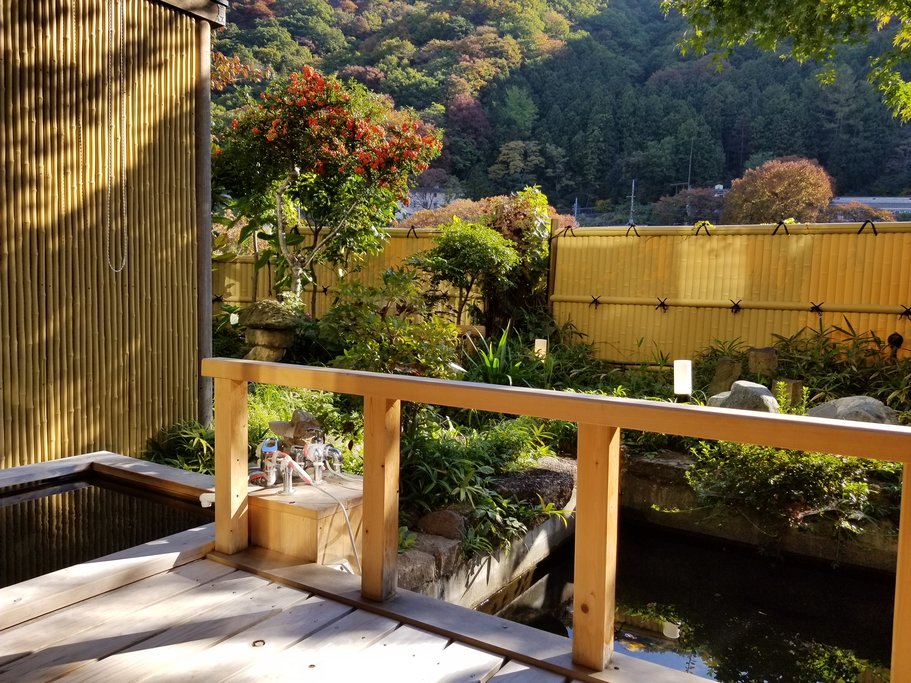
Koto no Yado Musashino
Situated approximately 40 kilometers south of the former imperial capital of Kyoto lies the enchanting temple city of Nara, a town renowned both for its sky-scraping pagodas, majestic structures that dominate the skyline, and the unique community of approximately 1,200 domesticated, spotted deer which, protected since ancient times and considered sacred animals, freely roam the verdant nearby parks and sacred Shinto and Buddhist sites. If your travels take you to this historically significant city, a truly perfect place to stay is the charming ryokan Koto no Yado Musashino, a well-established mainstay nestled serenely within the world-famous Nara Park. This prime location boasts breathtaking panoramic views of the majestic Mt. Wakakusa, the revered Kasuga Shrine, and the awe-inspiring The Colossal Hall of the Great Buddha, providing an unforgettable experience.
Arai
At the very heart of Shuzenji Hot Springs, a celebrated onsen destination, located on Japan’s scenic Izu Peninsula, which is widely known and regarded as the nation’s largest onsen region, you’ll discover the remarkable ryokan Arai, an expansive and impressive complex of traditional architecture painstakingly constructed from fragrant Japanese cypress more than 140 years ago. This historical establishment exudes an aura of timeless elegance. Here, the main onsen, a magnificent indoor/outdoor structure built in the traditional 8th century-style, is officially registered as the “First Bath of Natural Cultural Assets” and is widely considered a masterpiece of Japanese design and engineering. Rooms here offer breathtaking views of the gently flowing Katsura River or the ryokan’s meticulously maintained traditional gardens and serene koi ponds, providing a tranquil and visually stunning backdrop for your stay.
Micasa
Located north of the bustling metropolis of Tokyo, in the quaint and charming town of Minakami, a small, family-operated inn called Micasa offers inviting rooms with stunning views overlooking the jagged peaks of the nearby imposing Mt. Tanigawa. While undeniably beautiful at any time of year, this particular ryokan is an absolute must-stay destination in the autumn season, when the lush green maple forests dramatically transform into a vibrant crimson carpet that stretches as far as the eye can possibly see. The autumn foliage creates an unforgettable visual spectacle. Due to its relatively remote location, away from the main tourist routes, and its modest size, contributing to its intimate atmosphere, this hotel is generally considered to be amongst the most affordable of its kind. And, for a relatively small increase in the overall cost, guests have the option to upgrade to a room that features its own private outdoor onsen and meticulously landscaped garden, making it the perfect choice for couples who wish to bathe together in complete privacy and tranquility.
B-1444

